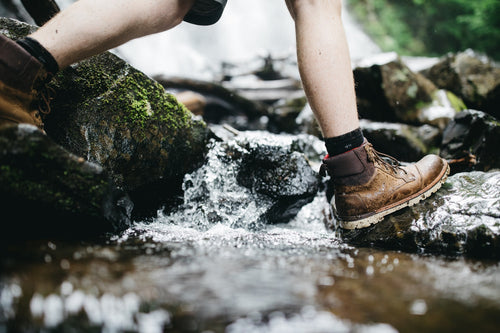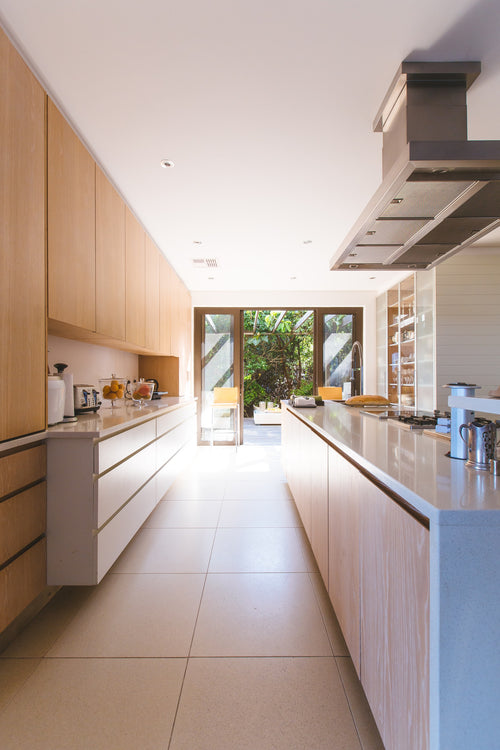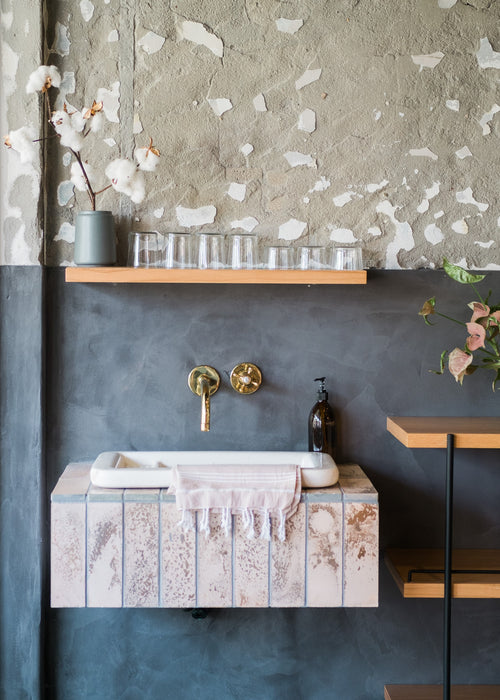DOS AND DON'TS OF CLEANING GRANITE WITH SOAP

While granite continues to be the most popular countertop material, many people don’t understand how to properly clean and care for it in order to protect it and keep it looking its best. At your local hardware store or online, you’ll see dozens of products designed to clean granite, but you probably already have everything you need to properly clean granite: soap and water.
While this simple solution has its benefits (cheap, nontoxic, easy), there are also some things you need to know before you begin cleaning. Today, we’re going to be sharing the basics with you: the dos and don’ts of how to clean granite with soap.
FIRST THINGS FIRST: PROS AND CONS OF CLEANING GRANITE WITH SOAP
Before you can begin cleaning granite countertops, you should know the benefits and challenges of using soap and water.
Pros:
-
No fancy cleaners needed: soap and water is an inexpensive solution that you probably already have on hand
-
Nontoxic and food safe: At SimpleCoat, we’re all about using products that don’t harm people, pets and the environment
-
Effective: soap and water is proven effective to eliminate bacteria, germs and viruses. It’s also great for tackling food debris, grease and other substances your countertops come into contact with
Cons:
-
Can create issues if used improperly: Not following the right steps to clean with soap and water can cause more harm than good
-
Staining: soaps with lots of dye can stain or discolor light-colored stone
-
One extra step: you’ll want to make a fresh soap solution with warm water each time you clean, which may be a con for those who just want to spray and go
THE DOS AND DON'TS OF CLEANING GRANITE WITH SOAP
The DosDo use a mild detergent soap. Regular Dawn or other dish soaps work well.
Do use a soft cloth. No special tools needed here: a soft cloth will help remove all grime and dirt without damaging countertops.
Do use warm to hot water. Use warm or hot in your solution for the best cleaning power. Cold water can’t break up greasy messes like hot water can.
Do use a soap tray for bar soaps and soap dispensers. Colorful soaps are common in kitchens and baths, but the soap itself can leave stains on stone (even clear soaps can leave the area darkened and hazy!). Use a soap tray to avoid this problem.
The Don’ts
Don’t pour soap directly on granite countertops. Stone is porous, and full strength soap can seep into pores causing tough to remove stains. Always dilute your soap with water before cleaning.
Don’t use an abrasive scrubber. Scrubbing brushes and steel wool can damage and scratch granite countertops, leaving them hazy looking.
Don’t forget to thoroughly dry countertops after cleaning. Standing water is an enemy of granite countertops. Dry them after cleaning with water to ensure no spots or streaks are left.
HOW TO CLEAN GRANITE COUNTERTOPS WITH SOAP AND WATER
Learning how to clean granite is simple. You will need:
-
A mild dish soap
-
Warm or hot water
-
A soft, clean rag or microfiber cloth for cleaning
-
A second clean, dry cloth for drying
-
Mix a quart of warm or hot water with a few drops of dish soap and mix
-
Dip a clean rag or microfiber cloth into the solution to wet the cloth. Depending on how much of a mess you’re tackling, you can wring it out to damp or keep it more wet
-
Wipe countertops from back to front in an “S” pattern
-
Repeat steps 2 and 3 as needed until countertops are clean
-
Dry countertops thoroughly with a clean, dry cloth
HOW TO KEEP GRANITE CLEANER, LONGER
Once you’ve cleaned and dried your granite countertops, make sure you apply a nontoxic, hydrophobic sealer like SimpleCoat to provide long-lasting protection from food, water, makeup, and soap stains. Even if a sealant is first applied when your countertops were installed, it wears off over time. Reapply for a glossy, protective finish that’s food and family safe.



